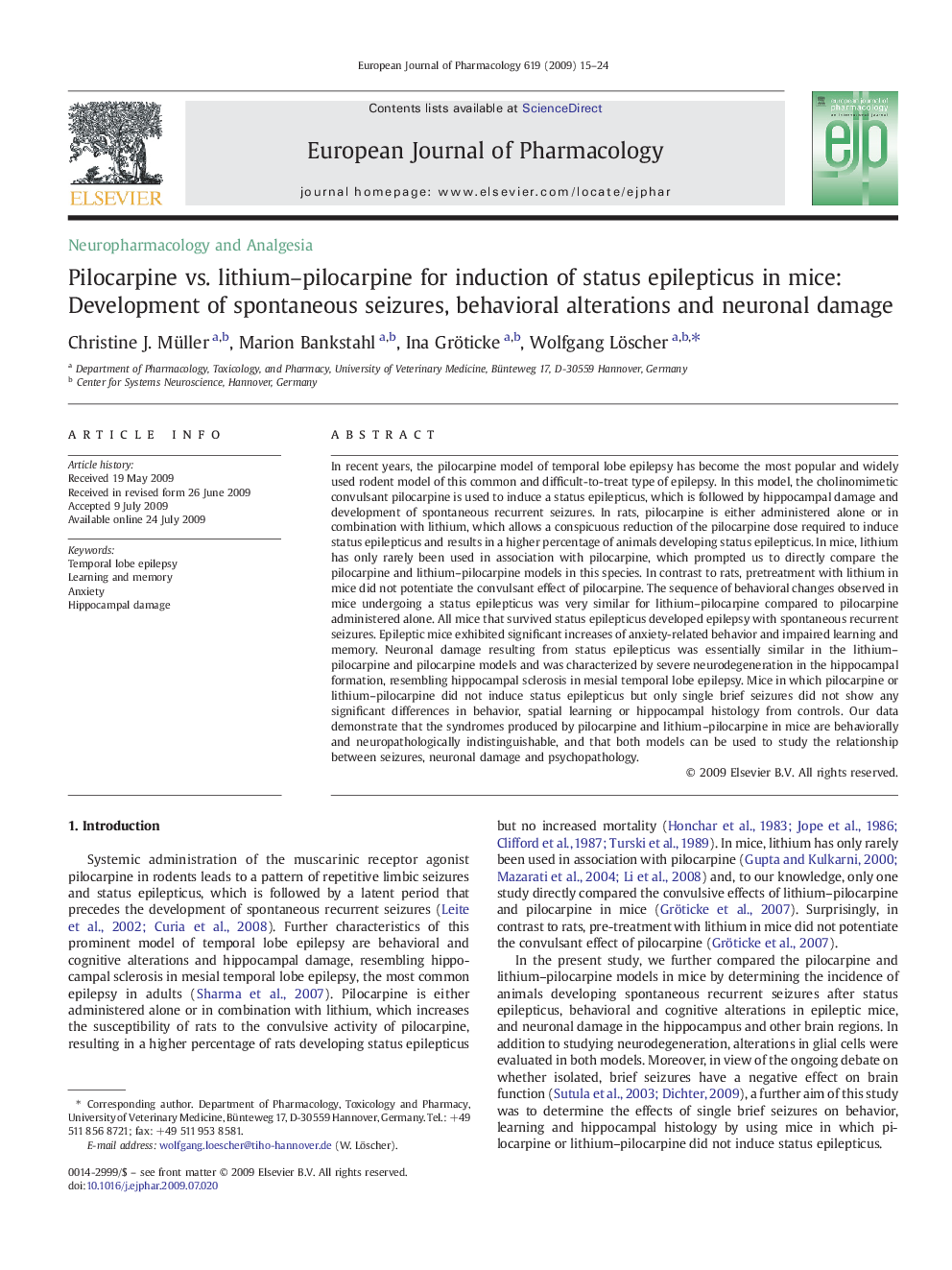| Article ID | Journal | Published Year | Pages | File Type |
|---|---|---|---|---|
| 2534094 | European Journal of Pharmacology | 2009 | 10 Pages |
In recent years, the pilocarpine model of temporal lobe epilepsy has become the most popular and widely used rodent model of this common and difficult-to-treat type of epilepsy. In this model, the cholinomimetic convulsant pilocarpine is used to induce a status epilepticus, which is followed by hippocampal damage and development of spontaneous recurrent seizures. In rats, pilocarpine is either administered alone or in combination with lithium, which allows a conspicuous reduction of the pilocarpine dose required to induce status epilepticus and results in a higher percentage of animals developing status epilepticus. In mice, lithium has only rarely been used in association with pilocarpine, which prompted us to directly compare the pilocarpine and lithium–pilocarpine models in this species. In contrast to rats, pretreatment with lithium in mice did not potentiate the convulsant effect of pilocarpine. The sequence of behavioral changes observed in mice undergoing a status epilepticus was very similar for lithium–pilocarpine compared to pilocarpine administered alone. All mice that survived status epilepticus developed epilepsy with spontaneous recurrent seizures. Epileptic mice exhibited significant increases of anxiety-related behavior and impaired learning and memory. Neuronal damage resulting from status epilepticus was essentially similar in the lithium–pilocarpine and pilocarpine models and was characterized by severe neurodegeneration in the hippocampal formation, resembling hippocampal sclerosis in mesial temporal lobe epilepsy. Mice in which pilocarpine or lithium–pilocarpine did not induce status epilepticus but only single brief seizures did not show any significant differences in behavior, spatial learning or hippocampal histology from controls. Our data demonstrate that the syndromes produced by pilocarpine and lithium–pilocarpine in mice are behaviorally and neuropathologically indistinguishable, and that both models can be used to study the relationship between seizures, neuronal damage and psychopathology.
